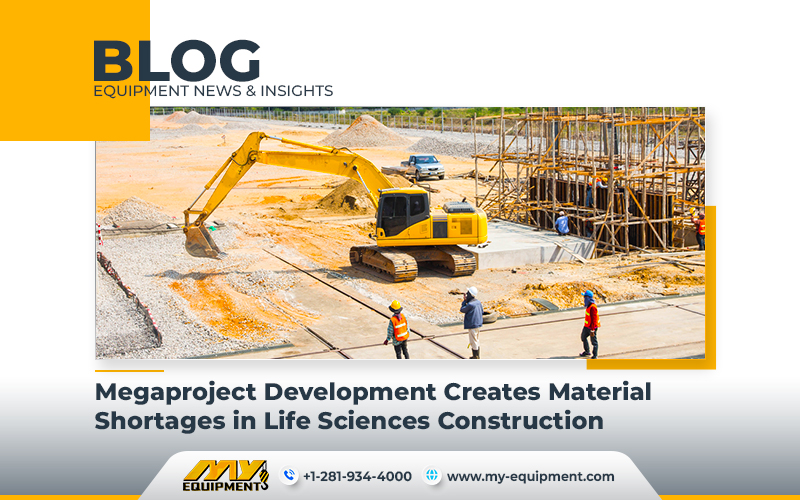Megaprojects in the construction industry, often involving multibillion-dollar endeavors, are causing significant disruptions in the supply chain for life sciences construction. Initially characterized by a labor shortage, these megaprojects are now impacting lead times for some important materials, including elevators, electrical switchgear, and generators, extending them to a staggering two years. This phenomenon is attributed to the competition for both skilled labor and essential materials.
Materials Shortages Affecting Life Sciences Construction
As the demand for megaprojects surges, it is not only drawing a substantial portion of the labor force away from other construction projects but also straining the availability of much needed materials. Materials such as generators, electrical switchgear, electrical panels, air handling units (AHUs), and elevators have seen lead times grow from four weeks to nearly two years, according to Jason D’Orlando, senior managing director at Cushman & Wakefield. This scarcity of materials and extended lead times is having a big impact on businesses looking to expand or relocate within the life sciences industry.
Inflationary Pressures and Material Shortages
The competition for commonly used construction materials has intensified due to the influx of multibillion-dollar government infrastructure projects and net-zero initiatives. Alongside labor shortages, this surge has led to material shortages and increased costs for projects that are not part of the megaproject boom. These inflationary pressures are affecting various aspects of life sciences construction.
Anticipated Delays in Material Supply
Several key areas within life sciences construction are expected to experience ongoing delays in material supply. These include.
Custom Woodwork – Manufactured millwork is subject to supply constraints, potentially impacting interior design aspects.
Vertical Transportation – Elevators, an important component for multistory life sciences facilities, are facing extended procurement timelines.
Impact on Electrification Projects
The rising demand for materials that are needed for electrification projects, such as copper and electrical switchgear, is driving up prices and lead times. For instance, electrical switchgear, which historically required four to six months for procurement, has seen lead times double or even triple over the past year.
Labor Shortages and Diversion of Workers
The challenges posed by megaprojects extend beyond materials shortages. Skilled labor shortages are exacerbated by the diversion of potential workers to these large-scale projects. This trend makes it even more challenging to staff other construction projects.
While demand for lab space in the United States appears to have peaked, life sciences construction activity remains high. According to JLL, the completion of projects is expected to outpace new project launches, suggesting a shrinkage in the pipeline. However, the industry’s recovery is expected to gain momentum with increased venture funding for lab space. Although the near-term deployment of private capital remains uncertain, the notable dry powder held by the top 20 venture capital firms indicates a positive outlook for investment in 2024.
The Need for Efficient Megaproject Management
Megaprojects are important for addressing the nation’s transportation challenges, but they come with complexities. Proper planning, development, design, and delivery are a must for these huge undertakings. Managing megaprojects involves not only overseeing a lot of construction but also navigating intricate public dynamics. Maintaining the trust and confidence of the public in the transportation sector’s ability to use resources wisely is hard but necessary. Neglect, oversight and poor project management can undermine these efforts.
Assessing Megaproject Complexity
To tackle megaprojects, transportation agencies must thoroughly understand their complexity. Managing these projects involves more than just overseeing some construction work.


 1400 Broadfield Blvd, Houston, TX 77084,
USA.
1400 Broadfield Blvd, Houston, TX 77084,
USA.